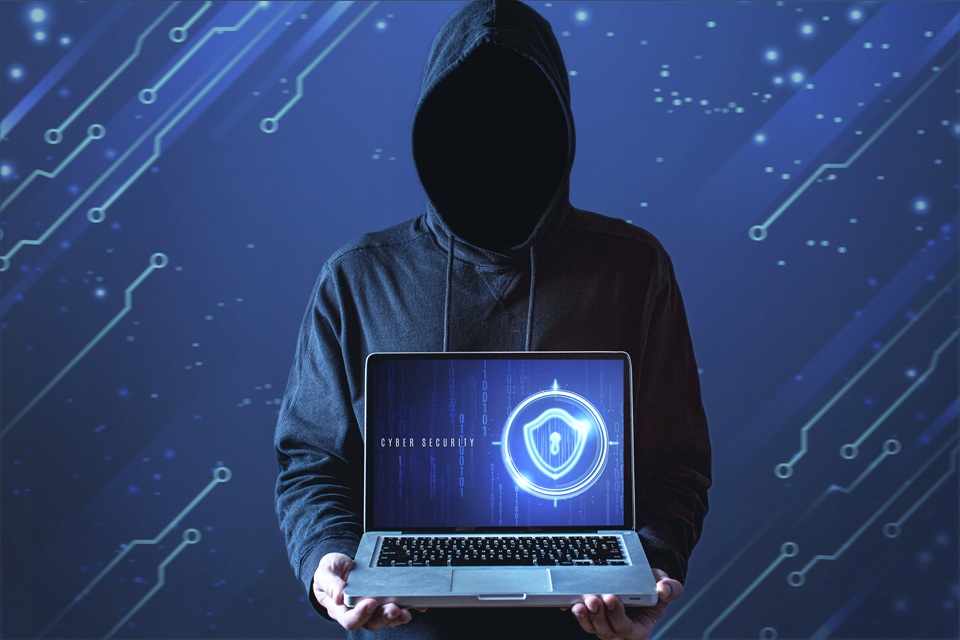- Strengthen your cybersecurity by using strong passwords, enabling two-factor authentication, and regularly updating your software to prevent cyber threats.
- Stay vigilant against phishing scams and malware by identifying suspicious emails and links and securing your Wi-Fi network with strong passwords and encryption.
- Regularly back up your data with the use of cloud storage and external drives to ensure quick recovery in the event of a cyberattack or system failure.
The digital age has transformed how we live, work, and communicate, bringing unprecedented convenience and connectivity. However, this digital revolution also introduces significant challenges, particularly in protecting personal and professional information from cybercriminals. The term network security fits prominently into this conversation, encompassing a suite of strategies aimed at defending data integrity from unauthorized access and various cyber threats. As cybercriminals become more cunning, the onus is on everyone—even those not deeply tech-savvy—to stay informed on cyber safety essentials. This guide aims to offer practical, clear steps you can take immediately to bolster your cybersecurity posture and fend off potential hacking attempts.
Understanding The Basics Of Cybersecurity
Cybersecurity can be likened to a dynamic and ever-adapting shield that prevents external threats from penetrating your personal digital space. It involves safeguarding systems, networks, and programs against digital attacks that aim to access, alter, or destroy sensitive data. The landscape is complex, yet understanding the basic principles of cybersecurity allows individuals and organizations alike to construct an initial line of defense. Cybersecurity doesn’t just encompass large corporations; it is equally relevant to individuals who conduct banking, shopping, or even social interactions online.
Recognizing Potential Threats
In modern digital life, recognizing potential threats is as vital as setting up defenses. Hackers employ a range of tactics, utilizing tools such as malware, ransomware, and phishing scams to compromise systems. Each threat presents unique challenges. Malware—short for malicious software—includes viruses, worms, trojans, and spyware, all capable of causing extensive damage. Ransomware, a particularly disruptive variant, blocks access to a user’s system or data, holding it “ransom” until a monetary amount is paid. Meanwhile, phishing, often experienced through deceptive emails or websites, tricks users into surrendering sensitive information. Staying vigilant and educated about these threats forms your first line of protection, enabling you to swiftly implement defensive strategies.
Strengthening Your Passwords
Your passwords serve as the frontline defense against unauthorized entry into your digital accounts. A strong password employs a combination of uppercase and lowercase letters, numbers, and special symbols—a simple step that greatly enhances your security posture. Avoid predictable information such as names, birthdays, or dictionary words. Instead, consider using a password manager, which not only generates robust passwords but also securely stores them, making it easier for you to maintain different strong passwords for various accounts without the headache of memorization.
Regular Software Updates
Regular software updates might seem like a mundane task, but they are a cornerstone of cybersecurity hygiene. Software developers release updates that often address security vulnerabilities that cybercriminals seek to exploit. Failing to install these updates when they become available leaves your systems exposed to attacks. Think of them as regular health check-ups for your devices—mundane yet essential, ensuring your digital ecosystem remains well-protected against the latest threats. Set your systems to install updates automatically if possible; this simple adjustment can bolster your cybersecurity without requiring constant vigilance.
The Role Of Two-Factor Authentication
Two-factor authentication, or 2FA, offers a critical layer of security that goes beyond the traditional password. By requiring two forms of verification—typically something you know (like a password) and something you have (like a smartphone)—you make unauthorized access much more difficult. Even if your password falls into the wrong hands, the second factor acts as a roadblock, preventing hackers from gaining entry to your accounts. With more online services offering 2FA, enabling this feature has become an essential practice for securing personal and professional accounts alike.
Identifying Suspicious Links & Emails
Phishing remains one of the most persistent and effective cyber threats, making it imperative to identify suspicious links and emails. Hackers send deceptive messages that mimic those from reputable organizations to harvest passwords or distribute malware. Key indicators of fraudulent emails include unsolicited attachments, suspicious sender addresses, and urgent requests for personal information. Train yourself to question unexpected emails, scrutinize the sender’s address, and hover over links to ensure they lead to legitimate sites. For further guidance on identifying phishing attempts, examine this comprehensive phishing prevention guide, which offers detailed insights into protecting yourself from these scams.
Secure Your Wi-Fi Network
Securing your Wi-Fi network is crucial for safeguarding your data from unauthorized access. Start by altering the default settings of your router, as these are often widely known and easily exploitable by cybercriminals. Employing a strong password for your Wi-Fi network is imperative, as well as following the same guidelines as those for your other digital accounts in terms of complexity and unpredictability. Moreover, enabling network encryption, preferably WPA3, adds a robust layer of security, minimizing the chances of outsider interference. Lastly, consider hiding your network’s SSID (the public name of your network) to limit its visibility to potential hackers. These practices ensure your Wi-Fi remains a fortress, keeping your personal data internal and secure.
Regular Backups & Data Recovery
Performing regular backups of your data is a fundamental aspect of a solid cybersecurity strategy. In the event of a cyberattack, system failure, or hardware malfunction, having current backups ensures you can swiftly recover important files. Consider employing two methods: cloud storage solutions, which provide easy access and restoration of files from any location, and physical external drives, which offer a reliable offline alternative. Establish a backup schedule suited to the frequency of your data updates, ensuring you are always prepared in case of an emergency. With backups, data loss transforms from a catastrophic event into a manageable inconvenience.






Leave a Reply